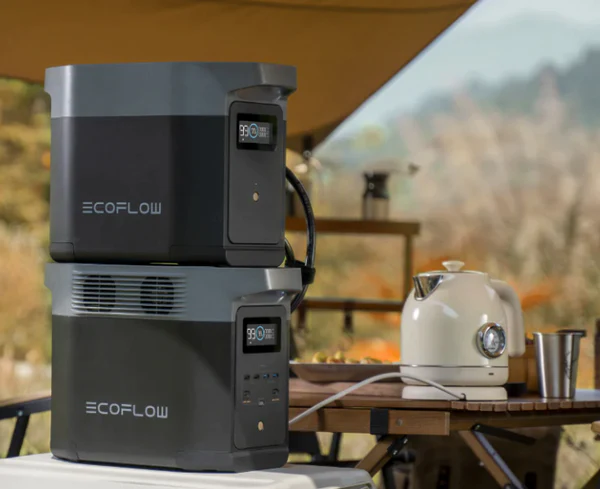The 15 Best Solar Generators in 2023 – The term solar generator can refer to any power system being technically energized by the sun, although people employing the term are most often discussing portable solar systems with a specialized battery part attached. These devices use solar panels to capture the sun’s power and then save that energy in a portable storage network for later use.
The inverter, the charge controller, the difference between 50 and 80-watt solar panels, etc. are features that indicate choosing the best solar generator can be complex if you’re not professional. Visit here to explore more about the main choosing options of them.
Most of us don’t even know our volts from our watts. To help you, we offer a list of the best solar generator units, helping you to know the pros and cons of various devices. We also discuss how a solar generator operates, why you might require one, and tricks to watch out for when buying one.
How We Selected The 10 Best Solar Generators in 2023
We’ve put together this guide to the 10 best solar generators in 2023. We selected these generators based on several factors, including their size, power, and features. We also consulted with experts in the field to get their recommendations. These experts have years of experience with solar generators, and they know what makes a good one. Also, we read hundreds of reviews from real customers to get their feedback. As a result, we’re confident that these are the best solar generators on the market. So whether you’re a DIYer, a professional, or just someone who needs a reliable solar generator for occasional use, you’re sure to find the perfect one on our list.
We have extensive experience with solar generators. We’ve used them for a variety of tasks, from powering lights during a power outage to charging laptops while camping. This experience has given us a deep understanding of what makes a good solar generator. We know what to look for in terms of size, power, and features. We know what features are most important for different types of users. This knowledge has allowed us to select the 10 best solar generators on the market. These generators are perfect for a variety of tasks, and they offer the best value for your money.
Our Top 10 Solar Generators
1. Jackery Explorer 500
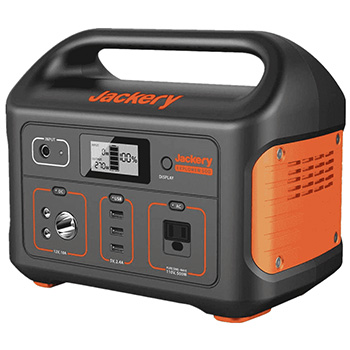
General Descriptions
The Jackery Explorer is the best solar generator based on different aspects. It’s a simple and comfortable device since it is lightweight, user-friendly, and versatile.
Perfect for backup power and camping, the Explorer 500 is just 13 lbs and comes with a robust built-in carry handle, so it’s simple to carry around with you on travel.
It has 3 USB outputs and an AC wall slot (among others) to energize your devices, so it’s ideal for charging iPads, smartphones, laptops, and other small-to-medium-sized instruments.
The device also has an LCD screen that displays battery life percentage data, real-time charging, and discharging. You often know where you stand down to the last percent.
2. Jackery Explorer 1000
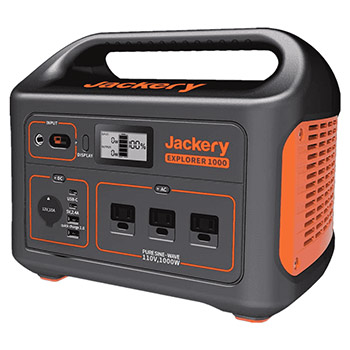
General Descriptions
The bigger type than the Explorer 500, the Jackery Explorer 1000 is the most appropriate solar generator for adventurers and campers who just require that little bit of additional power.
Complete with 2 USB outputs, 3 AC outputs, and 2 USB-C ports, you’ve got several options for charging various kinds of instruments. There’s even a fast-charging USB, which is used in a hurry on multiple occasions.
With 22 lbs weight, it’s a little less portable than the 500 types, but this portable device has more than most campers could ever require.
3. Renogy Lycan Powerbox
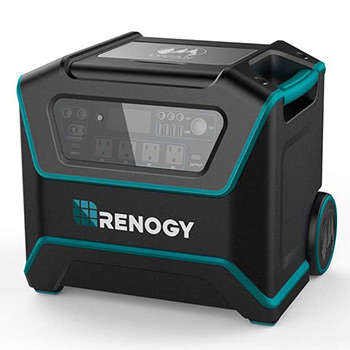
General Descriptions
Coming in at a whopping 55 lbs, this device has to be moved using wheels, so it’s suitable to be employed for long-term outdoor events, camping trips, or as emergency energy for your home.
The Lycan has multiple outputs including 4 USB slots and 4 AC slots. It also has a floodlight, which can be applied when the lights go out at night.
The battery of the device is mainly replaceable, but at 1200W it’s a little underwhelming.
4. Renogy Phoenix 300
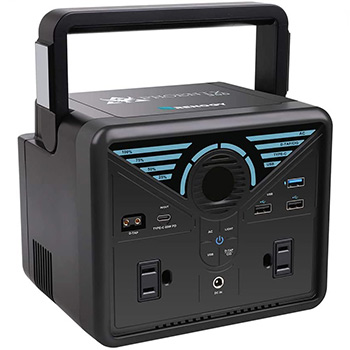
General Descriptions
Weighing a mere 6.4 lbs, this small box is the best solar generator for people who don’t require to energize anything huge. This is perfect for outdoor photographers due to its CPAP charging slot for device batteries. If you are likely not a photographer, don’t bother with it.
The Phoenix 300 includes 3 USB outlets and 2 AC outlets, which is pretty handy. Although you can only control the battery life in 25% chunks, you don’t know precisely when it will turn off.
5. EcoFlow Delta 1300
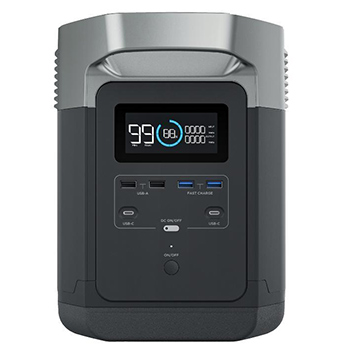
General Descriptions
The EcoFlow Delta 1300 is a modern solar generator that generates 1,300 watts/hour, as the term implies. It has several outputs including 2 USB-C ports, 6 AC outlets, and 4 regular USB ports.
You can keep an eye on the battery percentage and discharge/charge flow with a liquid crystal display, so that’s pretty comfortable too.
The battery demeans immediately, plunging to 60% after 800 cycles. If you’re going to use your power supply frequently, you’re probably best off with something more stable in the long operation.
6. Titan Solar Generator
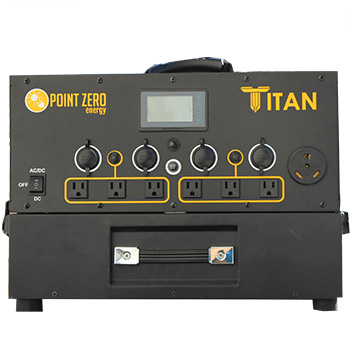
General Descriptions
The Titan, as the term shows, is huge. This device weighs a whopping 67 lbs once it’s all assembled, so it’s not the easiest box to move around your campsite or home.
With 2000Wh capacity, dual MPPT charge controllers, and a 3000W high-efficiency inverter, this device certainly has a lot to write home about, although, the expensive price, massive weight, and loud cooling fans all tear it down a few notches for us.
7. Goal Zero Yeti 400
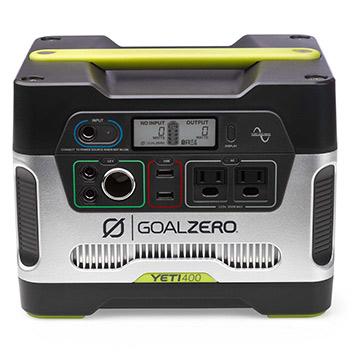
General Descriptions
This device has 400 watt-hours of energy, which seems a little small considering that this instrument weighs 29 lbs.
There is an LCD screen to show you the battery life and discharging/charging data, letting you know how much energy you’re draining or putting into the box simultaneously.
The Goal Zero Yeti 400 employs a lead-acid battery type, which is mainly considered to be the worst form (most companies use lithium).
8. Goal Zero Yeti 1000
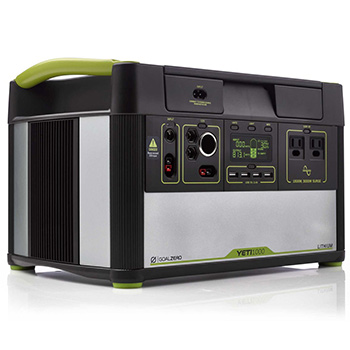
General Descriptions
Whereas the weight and the price may be steep, the Goal Zero Yeti 1400 has some significant qualities. We always like how the digital display explains to us how many hours we have left until the battery is empty. For example, once we have a cookout and we just want to keep the music and lights going in the backyard, we can take a glance at the Yeti and it tells us how long we’ve got left.
It’s also very handy. Although, this device has poor charge efficiency, no DC input ability, and it doesn’t come with any section or add-ons included.
9. Patriot Power Generator
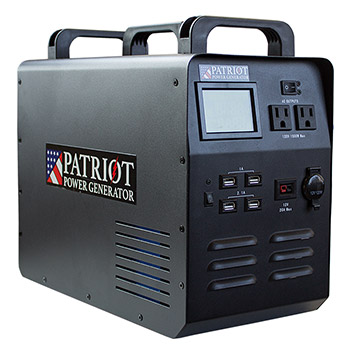
General Descriptions
First of all, the term indicates that it will have 1800 watt-hours of energy, but practically, it has a mere 690 wh. It is too expensive (not to mention the shipping) and for such a huge unit, it just has 2 AC outlets (40 lbs and they only bothered to set 2 wall outlets).
The cooling fans are also very noisy, so it’s not perfect if you want a power station that can operate silently in your environment.
10. Energy Flex 1500
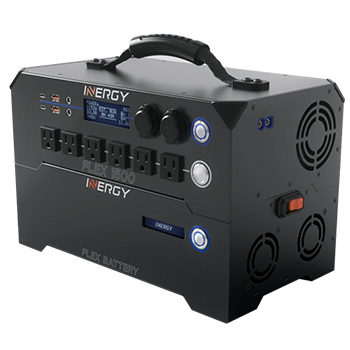
General Descriptions
The Energy Flex 1500 sounds like it can support 1,500 watt-hours, but practically, it’s only a disappointing 1,100 Wh. Given the weight and size of this device, you’d think it’d have more juice.
Whereas the stackable battery model is unique and clever, there’s so much about this solar generator that we can’t stand. First off, the AC outlets are not designed appropriately, so you can’t plug appliances in next to each other if they’re too big.
There’s also no RV plug and the solar charging is restricted to 600W, while other devices can get away with 1000W simply.
11. Jackery Explorer 1000

General Descriptions
The Jackery Explorer 1000 is a powerful and versatile solar generator that is perfect for a variety of tasks. It is quiet enough to use in a residential setting, and it has a long runtime, making it ideal for extended use. The Explorer 1000 is also lightweight and portable, making it easy to transport. It comes with a variety of accessories, including a tire inflator, a blow gun, and a variety of air chucks.
12. Goal Zero Yeti 1500X
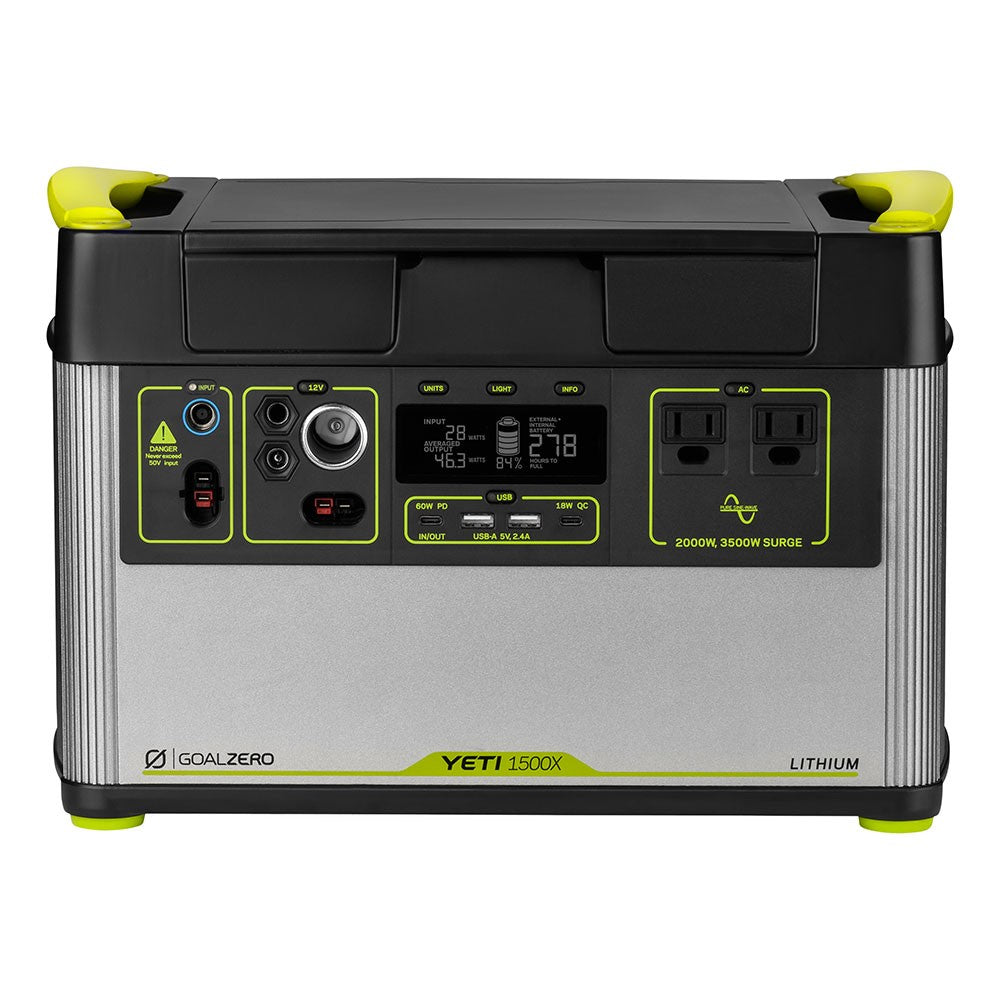
General Descriptions
The Goal Zero Yeti 1500X is a powerful and versatile solar generator that is perfect for a variety of tasks. It is quiet enough to use in a residential setting, and it has a long runtime, making it ideal for extended use. The Yeti 1500X is also portable, making it easy to transport. It can be expanded with additional battery packs, which increases its power and runtime.
13. Renogy Phoenix 2000

General Descriptions
The Renogy Phoenix 2000 is a powerful and versatile solar generator that is perfect for a variety of tasks. It is quiet enough to use in a residential setting, and it has a long runtime, making it ideal for extended use. The Phoenix 2000 is also portable, making it easy to transport. It can be expanded with additional battery packs, which increases its power and runtime.
14. BLUETTI AC200P

General Descriptions
The BLUETTI AC200P is a powerful and versatile solar generator that is perfect for a variety of needs. It has a long runtime and multiple charging options, making it easy to keep your devices powered up. The AC200P is also made with durable construction and comes with a long warranty, so you can be sure it will last.
15. ROCKPALS Solar Generator 2000W

General Descriptions
The ROCKPALS Solar Generator 2000W is a powerful and versatile solar generator that is perfect for a variety of needs. It has a long runtime and multiple charging options, making it easy to keep your devices powered up. The ROCKPALS Solar Generator 2000W is also made with durable construction and comes at an affordable price.
Things to Consider When Buying A Solar Generator
How Much Power Do You Need?
- These power sources are appropriate for camping, RVs, and backup power when the lights go out, but you cannot run your whole home off using one of them.
- You should consider your power requirements and buy a power source of a suitable size.
- Solar devices can energize some main appliances in your home in the event of an emergency. But no portable generator can truly power your entire home off-grid.
Can You Realistically Charge It with Solar Energy?
- If you’re dealing with cloudy days and low-wattage solar panels, you might find that your energy source is nearly impossible to charge.
- Only rely on solar energy if you’ve got enough panels, a good climate, and a lot of time.
How Much Battery Capacity Do You Require?
The potential of the battery is expressed in watts, which translates into watt-hours. The more watt-hours your energy source has, the longer you can perform devices.
Goal Zero (constructor of the Goal Zero Yeti 1400 Lithium and more) translate it appropriately:
One Watt-hour is identical to one Watt of average energy flow over an hour. One watt over five hours would be five Watt-hours of energy. As an example, a 100 Watt light bulb on a battery with 500 Watt-hour (like the Yeti 500) would theoretically last 5 hours.
Lead-acid Battery or Lithium-ion Battery?
While lead-acid batteries are more cost-effective than lithium-ion types, that’s the one and just upside.
Lithium batteries are more suitable due to several factors:
- Lithium-ion types are 95% efficient, while the lead-acid type is around 80-85% efficient.
- You can drain them by 85% without damaging them, although this is close to 50% with lead acid.
- A lithium form has a longer life cycle than lead-acid ones.
- A lithium battery is just much more reliable and stable.
Conclusion
So, what is the best solar generator out of all these significant devices?
If we had to select, we would say that you must use the Jackery Explorer 500 for sure. It’s portable and light (just 13.3 lbs) and it is connected to a carry handle that makes it suitable for camping, hikes, and outdoor applications.
The Jackery Explorer 500 also has an AC outlet and 3 USB ports, so you’re simply able to charge tablets, smartphones, or other electronic instruments multiple times over. There’s even a handy LCD that demonstrates precisely how much battery life you have left.
Buy Equipment or Ask for a Service
By using Linquip RFQ Service, you can expect to receive quotations from various suppliers across multiple industries and regions.
Click Here to Request a Quotation From Suppliers and Service Providers
Read More on Linquip

